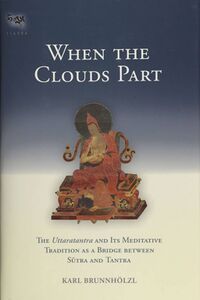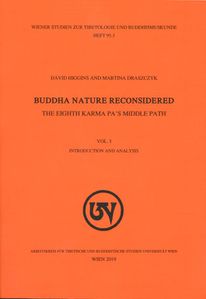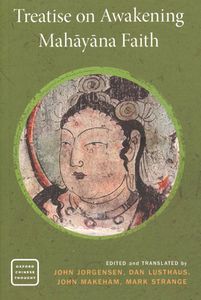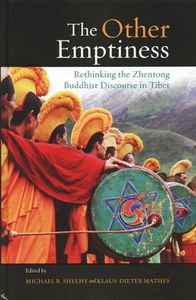Explore: Difference between revisions
((by SublimeText.Mediawiker)) |
No edit summary |
||
| (925 intermediate revisions by 5 users not shown) | |||
| Line 1: | Line 1: | ||
__NOTOC__{{HideFirstHeading}}{{#widget:BodyNoPadding}} | |||
<div class="text-article tsdwiki-depth-1 offwhite-bg mb-5"> | |||
<h1 class="text-center border-0 position-relative py-4 py-lg-5 my-0">{{#widget:DivWithBackImg | |||
|classes=w-100 h-100 position-absolute | |||
|src={{filepath:Saravanan-rajaraman-HG6wr0NT2ss-unsplash.jpg|1200}} | |||
|imageposition=50% 50% | |||
|styles=top: 0px; | |||
|imageSource= | |||
}} | |||
<div class="large position-relative my-4 my-lg-5 font-italic">Explore</div> | |||
</h1> | |||
<div class="position-relative bg-sky-clouds"> | |||
<div class="position-absolute h-100 w-100 opac-50 offwhite-bg"></div> | |||
< | <h4 class="position-relative pt-5 mb-4 pl-4 pb-2">Explore the subjects | ||
<div class="text-80 text-muted position-absolute" style="bottom: 7px; right: 10px;">[[Site Guide|Complete Site Guide]]</div> | |||
<div class=" | </h4> | ||
<div class="row mx-3 mx-lg-4 pt-4 pb-5"> | |||
{{LocalTile | |||
|classes=col-sm-6 col-lg-4 | |||
|link=Questions | |||
|header=The Questions | |||
|image=https://commons.tsadra.org/images/thumb/c/c0/Buddha_disciples_gold.jpg/800px-Buddha_disciples_gold.jpg | |||
|content=Why is buddha-nature important? What would it mean to not have buddha-nature? Is buddha-nature the soul? These and other common questions about buddha-nature are outlined below, with links to readings, videos, and other material to help you explore further. New to Buddhist ideas? Click on Discover below. | |||
|watermark=Subject | |||
}} | |||
{{LocalTile | |||
|classes=col-sm-6 col-lg-4 | |||
|link=Ideas | |||
|header=The Ideas | |||
|image=https://commons.tsadra.org/images/thumb/6/67/Sthiramati.jpg/648px-Sthiramati.jpg | |||
|content=Is buddha-nature already perfected and simply obscured by delusion, or is it a seed or potential that must be cultivated and perfected? Is buddha-nature a definitive or provisional teaching? Is it the mind's natural luminosity, or is it the same as emptiness? These are questions that cut to the heart of Mahāyāna Buddhist doctrine regarding the nature of enlightenment, reality, and the Path. This page introduces some of the key questions in buddha-nature theory, framed in terms of binaries. | |||
|watermark=Subject | |||
}} | |||
{{LocalTile | |||
|classes=col-sm-6 col-lg-4 | |||
|link=Topics | |||
|header=The Topics | |||
|image=https://commons.tsadra.org/images/thumb/c/c1/Christine-wehrmeier-DnVNH2_GY5g-unsplash.jpg/400px-Christine-wehrmeier-DnVNH2_GY5g-unsplash.jpg | |||
|content=In the latter stages of its historical development in India, the idea of buddha-nature emerged as one of the most salient features of the Mahāyāna Buddhist tradition. As this form of Buddhism spread beyond the cultural milieu of ancient India, the importance of buddha-nature became evermore pronounced. In East Asian and Tibetan Buddhism, buddha-nature came to be a major keystone in the assimilation and adaptation of the Indian scriptural tradition. And, as these forms of Buddhism expanded upon that Indian heritage and developed their own literary expression of the Buddhist teachings, buddha-nature continued to be a major theme that was revisited again and again. Thus buddha-nature was weaved into the very fabric of these Buddhist traditions. Below you will find a list of pertinent topics related to buddha-nature, along with some of the major themes in which it played a crucial role. | |||
|watermark=Subject | |||
}} | |||
{{LocalTile | |||
|classes=col-sm-6 col-lg-4 | |||
|link=People | |||
|header=The People | |||
|image=https://commons.tsadra.org/images/thumb/a/a3/Asanga_and_Maitreya.jpg/419px-Asanga_and_Maitreya.jpg | |||
|content=As one of the key doctrines of Mahāyāna Buddhism, buddha-nature has been taught by many of the greatest masters of India, China, Tibet, Japan, Mongolia, and Korea for well over a thousand years. Here you will find introductions to the many authors who have written on the topic, from the luminaries of Indian Madhyamaka to the great saints of Japan and Tibet. Also in this section, you will find pages for the many contemporary scholars and teachers who have written and spoken on buddha-nature. Simply filter the entire list using the search/filter bar below. | |||
|watermark=Subject | |||
}} | |||
{{LocalTile | |||
|classes=col-sm-6 col-lg-4 | |||
|link=History | |||
|header=The History | |||
|image=https://commons.tsadra.org/images/thumb/a/a3/Ascetic_Sumedha_and_Dipankara_Buddha.jpg/320px-Ascetic_Sumedha_and_Dipankara_Buddha.jpg | |||
|content=The doctrine of buddha-nature became widespread in India in the first centuries of the Common Era. Although the ideas have roots that stretch back to the earliest teachings of the Buddha, the concept of tathāgatagarbha—"womb or seed of buddhahood"—was first taught in Mahāyāna communities. It was related to, but most likely distinct from both Madhyamaka and Yogācāra, the dominant schools of the Mahāyāna, emerging primarily from a corpus of scripture collectively known as Tathāgatagarbha sūtras and a commentary on them known as the Ratnagotravibhāga. As these scriptures circulated in India and were translated into Chinese and Tibetan, buddha-nature theory spread and was ultimately integrated—albeit with significant differences—into all philosophical schools and traditions of Mahāyāna Buddhism, from Japanese Zen to Tibetan Mahāmudrā. | |||
|watermark=Subject | |||
}} | |||
{{LocalTile | |||
|classes=col-sm-6 col-lg-4 | |||
|link=Themes | |||
|header=The Themes | |||
|image=https://commons.tsadra.org/thumb.php?f=Jason-leung-D4YrzSwyIEc-unsplash.jpg&width=400 | |||
|content=Here you will find some examples of major themes in which the influence of buddha-nature is readily apparent. | |||
|watermark=Subject | |||
}} | |||
</div> | </div> | ||
</div> | </div> | ||
<div class="vienna-gradient pt-5 pb-4"> | |||
<h4 class="position-relative pt-5 mb-4 pl-4 pb-2">Featured Content</h4> | |||
<div class=" | <div class="row mx-3 mx-lg-4 py-4"> | ||
{{LocalTile | |||
<div class= | |classes=col-sm-6 col-lg-4 | ||
<div class=" | |link=Events | ||
<div class= | |header=Events | ||
|image=https://commons.tsadra.org/images/thumb/9/97/Vienna_2019_-_Day_2_-_July_17th_-_01.jpg/800px-Vienna_2019_-_Day_2_-_July_17th_-_01.jpg | |||
|content=This page of events related to the Buddha-Nature project includes recordings from scholarly meetings, special interviews and speeches, as well as online events hosted by Tsadra Foundation. | |||
}} | |||
{{LocalTile | |||
|classes=col-sm-6 col-lg-4 | |||
|link=Topic_of_the_week | |||
|header=Topic of the week | |||
|image=https://commons.tsadra.org/images/thumb/a/a2/Pecha-pixabay.jpg/800px-Pecha-pixabay.jpg | |||
|content=Read regular posts from the writer-in-digital-residence, Lopen Dr. Karma Phuntsho. | |||
}} | |||
{{LocalTile | |||
|classes=col-sm-6 col-lg-4 | |||
|link=Buddha-Nature_Event-19_September_2020 | |||
|header=Celebrating Buddha-Nature | |||
|image=https://commons.tsadra.org/images/thumb/5/57/Buddha_Life_Deeds_-_Activity_-_Cropped.jpg/800px-Buddha_Life_Deeds_-_Activity_-_Cropped.jpg | |||
|content=Live Event: Celebrating Buddha-Nature · Join us on Zoom or Facebook live as we celebrate Buddha-Nature teachings. | |||
|watermark=Event | |||
}} | |||
</div> | |||
{{FeaturedItem | |||
|page=2023_Buddha-Nature_Conference_Kathmandu | |||
|title=Buddha-Nature Conference, Shechen Monastery, Kathmandu, June 1–3, 2023 | |||
|description=[[Image:Kathmandu-2023-June3-22.jpg|450px|class=h-auto p-0 col col-sm-6 col-lg-4 float-sm-right mt-2 mb-2 mb-sm-0 ml-sm-3 rounded|link=2023_Buddha-Nature_Conference_Kathmandu|]]In connection with the Buddha-Nature resource project, Tsadra Foundation hosted a three-day conference from June 1–3, 2023 by inviting some 20 speakers of outstanding erudition representing the different Tibetan Buddhist traditions to discuss buddha-nature, related texts, theories, and practices. The conference was attended by over two hundred scholars from 32 monastic learning centers in and around Kathmandu, broadcast live and the proceedings were recorded. The conference proved to be a lively and stimulating debate from the very first presentation! Great minds lectured and debated on our true nature of compassion and wisdom, using airplanes, pet bottles, and bouquets as examples to argue or counterargue that all beings or all things have the luminous buddha-nature. The conversations were marked by penetrating intellectual acuity, a robust sense of humor sending forth frequent bursts of laughter, and a deep sense of mutual respect and humility, thus making a significant contribution to the understanding of buddha-nature. <br> <span class="float-right">[[2023_Buddha-Nature_Conference_Kathmandu|See all presentations <i class="fad fa-long-arrow-right rotate-45 fa-xs"></i>]]</span> | |||
|textclasses=vienna-gradient px-2 px-lg-5 py-3 py-lg-4 | |||
|additionalcontent=<div class="tsdwiki-border-t-redfade py-4 d-flex justify-content-center flex-wrap row"> | |||
{{#ask: [[Media/Lopon_Karma_Phuntso's_Introduction_of_Kyoton's_Life_and_Works]]OR[[Media/Khenpo_Tenpa_Tshering_at_the_2023_Buddha-Nature_Conference]]OR[[Media/Geshe_Lobsang_Gyatso_at_the_2023_Buddha-Nature_Conference]] | |||
|?Fulltitle | |||
|?Performer | |||
|?VideoNumberInEvent | |||
|?TileDescription | |||
|?TilePhoto | |||
|?MediaContentType | |||
|?citation | |||
|?BuNayTopicTags | |||
|?PerformerRaw | |||
|sort=VideoNumberInEvent | |||
|order=asc | |||
|format=template | |||
|template=SessionTile | |||
|userparam=col-md-6 col-lg-4 text-75 | |||
|link=none | |||
}} | |||
</div> | |||
}} | |||
{{FeaturedItem | |||
|page=Tathāgatagarbha_Across_Asia | |||
|title=Tathāgatagarbha Across Asia: The 2019 Vienna Symposium | |||
|description=[[Image:Vienna-Symposium-Banner-for-Workshops-Meetings-Tsadra-website.jpg|450px|class=h-auto p-0 col col-sm-6 col-lg-4 float-sm-right mt-2 mb-2 mb-sm-0 ml-sm-3 rounded|link=Tathāgatagarbha_Across_Asia|]]Increased attention to the tathāgatagarbha doctrine in the last decade has lead to significant publications and meetings on the topic of buddha-nature and related themes. Scholars in Asia, Europe, and the Americas have published new translations and studies of the foundational scriptures and commentaries, and are examining the history and literature of the doctrine. In July 2019 Tsadra Foundation partnered with the University of Vienna to bring many of these scholars together for an international symposium titled Tathāgatagarbha Across Asia. The presentations are available here and the edited papers will be published in a collection of essays from Wisdom Publications. <br> <span class="float-right">[[Tathāgatagarbha_Across_Asia|See all presentations <i class="fad fa-long-arrow-right rotate-45 fa-xs"></i>]]</span> | |||
|textclasses=vienna-gradient px-2 px-lg-5 py-3 py-lg-4 | |||
|additionalcontent=<div class="tsdwiki-border-t-redfade py-4 d-flex justify-content-center flex-wrap row"> | |||
{{#ask: [[Media/Klaus-Dieter_Mathes_at_the_2019_Tathagatagarbha_Symposium]]OR[[Media/Khenpo_Ngawang_Jorden_at_the_2019_Tathāgatagarbha_Symposium]]OR[[Media/Jacqueline_Stone_at_the_2019_Tathāgatagarbha_Symposium]] | |||
|?Fulltitle | |||
|?Performer | |||
|?VideoNumberInEvent | |||
|?TileDescription | |||
|?TilePhoto | |||
|?MediaContentType | |||
|?citation | |||
|?BuNayTopicTags | |||
|?PerformerRaw | |||
|sort=VideoNumberInEvent | |||
|order=asc | |||
|format=template | |||
|template=SessionTile | |||
|userparam=col-md-6 col-lg-4 text-75 | |||
|link=none | |||
|limit=150 | |||
}} | |||
</div> | |||
}} | |||
{{FeaturedItem | |||
|page=Old Topic, New Insights: Buddha-Nature at the Crossroads between Doctrine and Practice | |||
|title=Old Topic, New Insights: Buddha-Nature at the Crossroads between Doctrine and Practice | |||
|description=[[Image:Prague IATS1-1.jpg|450px|class=h-auto p-0 col col-sm-6 col-lg-4 float-sm-right mt-2 mb-2 mb-sm-0 ml-sm-3 rounded|link=Old_Topic,_New_Insights:_Buddha-Nature_at_the_Crossroads_between_Doctrine_and_Practice|]]Tsadra Foundation supported a panel at the 2022 IATS Conference in Prague. [[Old_Topic,_New_Insights:_Buddha-Nature_at_the_Crossroads_between_Doctrine_and_Practice|Watch the presentations here]].<br><br>''Panel Description:'' Continued scholarly publications, Buddhist teaching events, the recent development of online buddha-nature resources, and the associated Tathāgatagarbha symposium in Vienna in 2019 have spurred greater interest in the topic both within Tibetan Buddhist traditions and among other spiritual traditions. This panel brings together experts in an attempt to refine and deepen our understanding of buddha-nature both in terms of theoretical interpretations and practical applications in Tibetan Buddhist communities, past or present.<br><br>The main objective of the panel focuses on the interplay between points of doctrine and the practice of the path from the perspective of various Tibetan traditions and scholars. Contributions examine the interpretations of doctrines of tathāgatagarbha originally found in Indian scriptural sources. The methodological approach of these contributions range from historical-philological investigations to ethnographic research and comparative analysis. <br> <span class="float-right">[[Old_Topic,_New_Insights:_Buddha-Nature_at_the_Crossroads_between_Doctrine_and_Practice|See all presentations <i class="fad fa-long-arrow-right rotate-45 fa-xs"></i>]]</span> | |||
|textclasses=vienna-gradient px-2 px-lg-5 py-3 py-lg-4 | |||
|additionalcontent=<div class="tsdwiki-border-t-redfade py-4 d-flex justify-content-center flex-wrap row"> | |||
{{#ask: [[Media/Christopher_Jones:_Defining_a_"Buddha-Nature_Discourse":_The_Case_of_the_Mahāmeghasūtra_(Sprin_chen_po'i_mdo)]]OR[[Media/Yaroslav_Komarovski:_Shakya_Chokden_on_Tathāgatagarbha_in_the_Tantric_Practice_of_the_Two_Stages]]OR[[Casey_Kemp:_Buddha-Nature_as_a_Path_of_Means:_The_Influence_of_Buddha-Nature_Theory_on_Eleventh-Century_Tibetan_Tantric_Instructions]] | |||
|?Fulltitle | |||
|?Performer | |||
|?VideoNumberInEvent | |||
|?TileDescription | |||
|?TilePhoto | |||
|?MediaContentType | |||
|?citation | |||
|?BuNayTopicTags | |||
|?PerformerRaw | |||
|sort=VideoNumberInEvent | |||
|order=asc | |||
|format=template | |||
|template=SessionTile | |||
|userparam=col-md-6 col-lg-4 text-75 | |||
|link=none | |||
|limit=150 | |||
}} | |||
</div> | |||
}} | |||
<div> | |||
<div class="row"> | |||
<div class="col-lg-9 pr-lg-0"> | |||
{{FeaturedItem | |||
|page=Articles/Karl_Brunnhölzl_Interview_on_Buddha-Nature | |||
|title=Interview with Karl Brunnhölzl on Buddha-Nature | |||
|description=In this wide-ranging video interview, Karl Brunnhölzl discusses buddha-nature and the key topics related to it. He begins by defining buddha-nature and then moves on to discuss such topics as the debate that the doctrine has generated, the concepts of emptiness and luminosity, and how buddha-nature relates to Vajrayana practice. | |||
|image=https://commons.tsadra.org/images/e/e1/Brunnholzl_Karl_Mitra-Karl.jpg | |||
|textclasses=karl-gradient pl-1 pt-2 pb-3 | |||
|additionalcontent=<div class="py-3 d-flex justify-content-center flex-wrap row"> | |||
{{#ask: [[Media/What Is Buddha-Nature? by Karl Brunnhölzl]]OR[[Media/Emptiness or Luminosity: What's the Deal? by Karl Brunnhölzl]] | |||
|?Fulltitle | |||
|?Duration | |||
|?MediaNumberInEvent | |||
|?MediaEventPage | |||
|?VideoNumberInEvent | |||
|?VideoTotalNumberInEvent | |||
|?MediaContentType | |||
|sort=VideoNumberInEvent | |||
|order=asc | |||
|format=template | |||
|template=SmallSessionTile | |||
|userparam=col-md-6 text-70 | |||
|link=none | |||
}} | |||
</div> | </div> | ||
}} | |||
</div> | |||
<div class="col-lg-3 p-3"> | |||
<div class="sub-section-header mt-4 mt-lg-2 mb-2 text-center">[[Karl Brunnhölzl]]</div> | |||
<div class="d-flex justify-content-around flex-wrap"> | |||
{{RelatedButton | |||
|link=/index.php/Books/When_the_Clouds_Part | |||
|image=https://commons.tsadra.org/images/thumb/2/28/When_the_Clouds_Part-front.jpg/399px-When_the_Clouds_Part-front.jpg | |||
|text=When the Clouds Part | |||
|label-right=Book | |||
|target=_blank | |||
|wrapperclasses=my-2 tsdwiki-depth-0 | |||
}} | |||
{{RelatedButton | |||
|link=/index.php/Books/The_Center_of_the_Sunlit_Sky | |||
|image=https://commons.tsadra.org/images/thumb/3/30/Center_of_the_Sunlit_Sky-front.jpg/404px-Center_of_the_Sunlit_Sky-front.jpg | |||
|text=The Center of the Sunlit Sky | |||
|label-right=Book | |||
|target=_blank | |||
|wrapperclasses=my-2 tsdwiki-depth-0 | |||
}} | |||
{{RelatedButton | |||
|link=/index.php/Books/Luminous_Heart | |||
|image=https://commons.tsadra.org/images/thumb/c/c1/Luminous_Heart-front.jpg/412px-Luminous_Heart-front.jpg | |||
|text=Luminous Heart | |||
|label-right=Book | |||
|target=_blank | |||
|wrapperclasses=my-2 tsdwiki-depth-0 | |||
}} | |||
</div> | </div> | ||
</div> | </div> | ||
</div> | </div> | ||
<div class=" | <div class="row phuntso-gradient m-0"> | ||
<div class=" | <div class="col-12 p-0"> | ||
{{FeaturedItem | |||
|page=People/Phuntsho,_Karma | |||
|title=New Writer-In-Digital-Residence: Karma Phuntsho, 2020-2022 | |||
|description=<p>The writer-in-digital-residence is the recipient of a grant designed to support Tsadra Foundation’s Buddhist literacy projects that connect the larger public with academic research and advance understanding of specific aspects of Tibetan Buddhist traditions. Writers help to curate this online resource and write essays on the history, philosophy, and practices associated with buddha-nature teachings and tathāgatagarbha theory in Tibet. These essays are addressed to an audience of educated readers of Buddhist materials and Buddhist practitioners.</p> | |||
<p>Lopen (Dr) Karma Phuntsho is one of Bhutan’s leading intellectuals. He has finished monastic training in Bhutan and India before he pursued a M.St in Classical Indian Religions, and D.Phil in Oriental Studies at Balliol College, Oxford. He was a researcher at CNRS, Paris, a Research Associate at Department of Social Anthropology and the Spalding Fellow for Comparative Religion at Clare Hall, Cambridge University, and Research Consultant at University of Virginia. An author of over hundred books and articles including the authoritative History of Bhutan and Mipham’s Dialectics and the Debates on Emptiness, he speaks and writes extensively on Bhutan and Buddhism. [[Karma Phuntsho|Read a complete bio]].</p> | |||
|image=https://commons.tsadra.org/images/thumb/1/14/Tricycle_Bhutan-Karma-Phuntsho.jpg/800px-Tricycle_Bhutan-Karma-Phuntsho.jpg | |||
|imagelink=https://tricycle.org/magazine/bhutan-on-the-brink/ | |||
|imageposition=right | |||
|textclasses=pl-lg-5 py-3 py-lg-4 | |||
|additionalcontent= | |||
}} | |||
</div> | |||
</div> | |||
<div class="row maitreya-gradient m-0 py-4"> | |||
<h4 class="col-12 mt-2 mb-4 py-2 pl-lg-4 tsdwiki-border-br-redfade">Conversations on Buddha-Nature</h4> | |||
<div class="col-lg-9 pl-lg-5 pr-lg-4"> | |||
<h5 class="mt-4 mb-3 mb-lg-4 tsdwiki-border-br-redfade">Chatting with teachers, leaders, and influencers in the Dharma World</h5> | |||
<div>Tsadra Foundation is excited to support Karma Phuntsho in developing a series of online events called "[[Conversations on Buddha-Nature]]". This podcast-like project will be space for stimulating and inspiring conversations on Buddha-Nature and related subjects. As a part of the Buddha-Nature Project of the Tsadra Foundation, Karma Phuntsho will host conversations with a Buddhist leader, influencer or expert each month on the theories and practices of Buddha-Nature, which will be live on Facebook. An exercise of mindful listening, right speech, and wholesome exploration of meaning and nature of life, these conversations aim to enhance the understanding and awareness of Buddha-Nature and promote the ethos of innate goodness and positive perception.</div> | |||
</div> | |||
<div class="col-lg-3"> | |||
<h5 class="mt-4 mb-3 mb-lg-4 tsdwiki-border-br-redfade">Speakers</h5> | |||
<div class="d-flex flex-wrap"> | |||
{{PeopleMentionedMedia|People/Phuntsho, Karma|showdates=no|height=auto|margins=m-0}} | |||
{{PeopleMentionedMedia|People/Thurman,_R.|showdates=no|height=auto|margins=m-0}} | |||
{{PeopleMentionedMedia|People/Ricard,_M.|showdates=no|height=auto|margins=m-0}} | |||
</div> | </div> | ||
</div> | </div> | ||
</div> | </div> | ||
<h4 class="mt-4 mb-4 pl-4 pb-2 tsdwiki-border-br-redfade">From the experts</h4> | |||
<div class="row klaus-gradient m-0"> | |||
< | <div class="col-lg-3 pl-3 pb-4"> | ||
<div class="sub-section-header mt-4 mt-lg-2 mb-2 text-center">[[Klaus-Dieter Mathes]]</div> | |||
<div class="d-flex justify-content-around flex-wrap"> | |||
{{RelatedButton | |||
|link=/index.php/Books/A_Direct_Path_to_the_Buddha_Within:_Go_Lotsāwa%27s_Mahāmudrā_Interpretation_of_the_Ratnagotravibhāga | |||
|image=https://commons.tsadra.org/images/7/77/A_Direct_Path_to_the_Buddha_Within-front.jpg | |||
|text=A Direct Path to the Buddha Within | |||
|label-right=Book | |||
|target=_blank | |||
|wrapperclasses=my-2 tsdwiki-depth-0 | |||
}} | |||
{{RelatedButton | |||
|link=/index.php/Articles/The_Eighth_Karmapa_Mi_bskyod_rdo_rje_(1507-1554)_on_the_Relation_between_Buddha_Nature_and_its_Adventitious_Stains | |||
|image=https://commons.tsadra.org/images/thumb/3/31/Karmapa_8th.jpg/144px-Karmapa_8th.jpg | |||
|text=Mi bskyod rdo rje on Buddha Nature and its Adventitious Stains | |||
|label-right=Article | |||
|target=_blank | |||
|wrapperclasses=my-2 tsdwiki-depth-0 | |||
}} | |||
</div> | |||
</div> | |||
<div class="col-lg-9 p-0"> | |||
{{FeaturedItem | |||
|page=Articles/Klaus-Dieter_Mathes_Interview_on_Buddha-Nature | |||
|title=Buddha-Nature in Comparative Perspective | |||
|description=In this interview Professor Klaus-Dieter Mathes discusses buddha-nature and the key ideas behind it, the controversies it generates, and some of the related Buddhist philosophy in comparative perspective. | |||
|image=https://commons.tsadra.org/images/2/24/Mathes,_Klaus-Dieter-Official_2019.jpg | |||
|imageposition=right | |||
|textclasses=pl-4 pt-2 pb-3 | |||
|additionalcontent=<div class="tsdwiki-border-t-redfade pt-3 text-center">{{InsertHtml5Audio|File:Mathes-Interview-Complete-53min-04sec.mp3}} | |||
</div> | </div> | ||
}} | |||
</div> | </div> | ||
</div> | </div> | ||
<div class=" | <div class="row m-0 wulstan-gradient"> | ||
<div class=" | <div class="col-lg-9 p-0"> | ||
{{FeaturedItem | |||
|page=Articles/Wulstan_Fletcher_Interview_on_Buddha-Nature | |||
|title=Interview with Wulstan Fletcher on Buddha-Nature | |||
|description=In this video interview Wulstan Fletcher discusses Mipham's and Longchenpa's approach to buddha-nature as well as his personal experiences with buddha-nature teachings and how they have influenced his practice. | |||
|image=https://commons.tsadra.org/images/thumb/d/d1/Fletcher%2C_Wulstan-2014new.jpg/490px-Fletcher%2C_Wulstan-2014new.jpg | |||
|textclasses=pt-2 pb-3 | |||
|additionalcontent=<div class="py-3 d-flex justify-content-center flex-wrap row"> | |||
{{#ask: [[Media/On_Mipham_and_the_Nyingma_Approach_to_Buddha-Nature_by_Wulstan_Fletcher]]OR[[Media/On_His_Personal_Encounter_with_Buddha-Nature_Teachings_by_Wulstan_Fletcher]] | |||
|?Fulltitle | |||
|?Duration | |||
|?MediaNumberInEvent | |||
|?MediaEventPage | |||
|?VideoNumberInEvent | |||
|?VideoTotalNumberInEvent | |||
|?MediaContentType | |||
|sort=VideoNumberInEvent | |||
|order=asc | |||
|format=template | |||
|template=SmallSessionTile | |||
|userparam=col-md-6 text-70 | |||
|link=none | |||
}} | |||
</div> | </div> | ||
}} | |||
</div> | |||
<div class="col-lg-3 p-lg-3 pb-3"> | |||
<h5 class="mt-4 mt-lg-2 mb-2 text-center">[[Wulstan Fletcher]]</h5> | |||
<div class="d-flex justify-content-center flex-wrap"> | |||
{{RelatedButton | |||
|link=/index.php/Books/Finding_Rest_in_the_Nature_of_the_Mind | |||
|image=https://commons.tsadra.org/images/2/2c/Finding_Rest_in_the_Nature_of_the_Mind-front.jpg | |||
|text=Finding Rest in the Nature of the Mind | |||
|label-right=Book | |||
|target=_blank | |||
|wrapperclasses=my-2 tsdwiki-depth-0 | |||
}} | |||
{{RelatedButton | |||
|link=/index.php/Books/Treasury_of_Precious_Qualities:_Book_Two | |||
|image=https://commons.tsadra.org/images/e/e6/Treasury_of_Precious_Qualities_%28Book_Two%29-front.jpg | |||
|text=Treasury of Precious Qualities: Book Two | |||
|label-right=Book | |||
|target=_blank | |||
|wrapperclasses=my-2 tsdwiki-depth-0 | |||
}} | |||
</div> | </div> | ||
</div> | </div> | ||
</div> | </div> | ||
<div class="row m-0 elizabeth-gradient"> | |||
<div class="col-lg-3 pl-3 pb-4"> | |||
<h5 class="mt-4 mb-2 text-center">[[Elizabeth Callahan]]</h5> | |||
<div class="d-flex justify-content-around flex-wrap"> | |||
<div class=" | {{RelatedButton | ||
|link=/index.php/Books/Frameworks_of_Buddhist_Philosophy | |||
|image=https://commons.tsadra.org/images/c/cd/Frameworks_of_Buddhist_Philosophy-front.jpg | |||
|text=Frameworks of Buddhist Philosophy | |||
|label-right=Book | |||
|target=_blank | |||
|wrapperclasses=my-2 tsdwiki-depth-0 | |||
}} | |||
{{RelatedButton | |||
|link=/index.php/Books/Moonbeams_of_Mahāmudrā_(Callahan) | |||
|image=https://commons.tsadra.org/images/3/34/Moonbeams_of_Mah%C4%81mudr%C4%81_%28Elizabeth_M._Callahan%2C_2019%29-front.jpg | |||
|text=Moonbeams of Mahāmudrā | |||
|label-right=Book | |||
|target=_blank | |||
|wrapperclasses=my-2 tsdwiki-depth-0 | |||
}} | |||
</div> | |||
</div> | |||
<div class="col-lg-9 p-0"> | |||
{{FeaturedItem | |||
|page=Articles/Elizabeth_Callahan_Interview_on_Buddha-Nature | |||
|title=Interview with Elizabeth Callahan on Buddha-Nature | |||
|description=In this video interview Elizabeth Callahan discusses the key terminology that is used when speaking of buddha-nature. She explains the term ''ordinary mind'' and elaborates on the meaning of buddha-nature. | |||
|image=https://commons.tsadra.org/images/0/0c/Callahan%2C_Elizabeth_Canyon_Cropped.jpg | |||
|imageposition=right | |||
|textclasses=pl-4 pt-2 pb-3 | |||
|additionalcontent=<div class="py-3 d-flex justify-content-center flex-wrap row"> | |||
{{#ask: [[Media/On_the_Term_Ordinary_Mind_by_Elizabeth_Callahan]]OR[[Media/What_Is_Buddha-Nature?_by_Elizabeth_Callahan]] | |||
|?Fulltitle | |||
|?Duration | |||
|?MediaNumberInEvent | |||
|?MediaEventPage | |||
|?VideoNumberInEvent | |||
|?VideoTotalNumberInEvent | |||
|?MediaContentType | |||
|sort=VideoNumberInEvent | |||
|order=asc | |||
|format=template | |||
|template=SmallSessionTile | |||
|userparam=col-md-6 text-70 | |||
|link=none | |||
}} | |||
</div> | |||
}} | |||
</div> | </div> | ||
</div> | </div> | ||
<div class="row m-0 alex-gradient"> | |||
<div class="col-lg-9 p-0"> | |||
{{FeaturedItem | |||
<div class="row | |page=Articles/On_the_Ratnagotravibhāga | ||
|title=First Writer-In-Digital-Residence: Alex Gardner On the Ratnagotravibhāga | |||
|description=Alexander Gardner is Director and Chief Editor of the Treasury of Lives, an open-access biographical encyclopedia of Tibet, Inner Asia, and the Himalayan region. He completed his PhD in Buddhist Studies at the University of Michigan in 2007 and is the author of ''The Life of Jamgon Kongtrul the Great'', published by Shambhala in 2019. Alex served as the Writer-in-Digital-Residence for Tsadra Foundation's Buddha-Nature Project from 2017-2019. Read his key contributions here! | |||
|image=https://commons.tsadra.org/images/5/50/Alexander_Gardner.jpg | |||
|textclasses= pt-3 pb-2 | |||
}} | |||
</div> | |||
<div class="col-lg-3 p-3"> | |||
<h5 class="mt-4 mt-lg-2 mb-2 text-center">[[Alex Gardner]]</h5> | |||
<div class="d-flex justify-content-around flex-wrap"> | |||
{{RelatedButton | |||
{{ | |link=/index.php/Articles/On_the_Ratnagotravibhāga | ||
|image=https://commons.tsadra.org/images/5/50/Alexander_Gardner.jpg | |||
|text=On the Ratnagotravibhāga | |||
|label-right=Article | |||
|target=_blank | |||
|wrapperclasses=my-2 tsdwiki-depth-0 | |||
|textclasses=text-90 | |||
}} | |||
{{RelatedButton | |||
|link=/index.php/Articles/A_History_of_Buddha-Nature_Theory:_The_Literature_and_Traditions | |||
|image=https://commons.tsadra.org/images/5/50/Alexander_Gardner.jpg | |||
|text=A History of Buddha-Nature Theory: The Literature and Traditions | |||
|label-right=Article | |||
|target=_blank | |||
|wrapperclasses=my-2 tsdwiki-depth-0 | |||
}} | |||
</div> | </div> | ||
</div> | </div> | ||
</div> | </div> | ||
< | <h4 class="mt-5 mb-4 pl-4 pb-2 tsdwiki-border-br-redfade">Other Interviews</h4> | ||
<div class="d-flex justify-content-center flex-wrap"> | |||
{{#ask: [[Articles/Ringu_Tulku_Interview_on_Buddha-Nature]]OR[[Articles/Tokpa_Tulku_Interview_on_Buddha-Nature]] | |||
|?BuNayTitle | |||
|?AuthorPage | |||
|?MediaNumberInEvent | |||
|?TileDescription | |||
|?TilePhoto | |||
|?BuNayPageType | |||
|?citation | |||
|?BuNayTopicTags | |||
|format=template | |||
|template=SessionTile | |||
|userparam=col-sm-6 col-lg-4 text-70 | |||
{{ | |link=none | ||
{{ | |limit=150 | ||
}} | |||
</div> | |||
<h4 class="mt-5 mb-4 pl-4 pb-2 tsdwiki-border-br-redfade">Publications</h4> | |||
<div class="d-flex justify-content-around flex-wrap"> | |||
{{ExploreBook | |||
|page=Books/When_the_Clouds_Part | |||
|image=File:When_the_Clouds_Part-front.jpg | |||
|authorimage=People/Brunnhölzl, K. | |||
|name=[[People/Brunnhölzl, K.|Brunnhölzl]] | |||
|title=When the Clouds Part | |||
}} | |||
{{ExploreBook | |||
|page=Books/Buddha_Nature_Reconsidered_-_Vol_1 | |||
|authorimage=People/Higgins, D. | |||
|name=[[People/Higgins, D.|Higgins]] & [[Draszczyk, M.|Draszczyk]] | |||
|title=Buddha Nature Reconsidered | |||
}} | |||
{{ExploreBook | |||
|page=Books/Treatise_on_Awakening_Mahāyāna_Faith | |||
|authorimage=People/Lusthaus, D. | |||
|name=[[People/Jorgensen, J.|Jorgensen]] & [[People/Lusthaus, D.|Lusthaus]], et al. | |||
|title=Treatise on Awakening Mahāyāna Faith | |||
}} | |||
{{ExploreBook | |||
|page=Books/The_Other_Emptiness:_Rethinking_the_Zhentong_Buddhist_Discourse_in_Tibet | |||
|authorimage=People/Sheehy, M. | |||
|name=[[People/Sheehy, M.|Sheehy]] & [[People/Mathes, K.|Mathes]] | |||
|title=The Other Emptiness | |||
}} | |||
</div> | |||
{{FeaturedItem | |||
|page=Primary_Sources | |||
|description=<h4 class="my-3 tsdwiki-border-br-redfade">Study the sources</h4> | |||
<div class="pl-lg-5 pr-lg-4">The seeds of buddha-nature teachings are sprinkled throughout the sutras and tantras of the Buddhist canon. A core group of scripture that initially taught buddha-nature known as the tathāgatagarbha sūtras date between the second and fourth centuries. These include the ''Tathāgatagarbhasūtra'', the ''Mahāparinirvāṇasūtra'', the ''Śrīmālādevīsūtra'' and several others. The famous ''Laṅkāvatārasūtra'' was also important for buddha-nature theory. In Tibetan Buddhism the late-Indian treatise ''Ratnagotravibhāga Mahāyānottaratantraśāstra'', or "Gyu Lama" as it is known in the Tibetan, serves as a major source for buddha-nature. In East Asia the ''Awakening of Faith in the Mahāyāna'' (大乗起信論) was the most influential treatise in spreading buddha-nature theory.<p class="featured-link">[[Primary Sources|Read more on the sources for buddha-nature teachings...]]</p></div> | |||
|image=https://commons.tsadra.org/images/thumb/c/c7/Maitreya_statue.jpg/431px-Maitreya_statue.jpg | |||
|textclasses=maitreya-gradient pt-2 pb-3 | |||
|imageposition=right | |||
|imageclasses=flip-h | |||
|additionalcontent=<div class="tsdwiki-border-t-redfade py-3 d-flex justify-content-center flex-wrap"> | |||
{{RelatedButton | |||
|link=/index.php/Texts/Ratnagotravibhāga_Mahāyānottaratantraśāstra | |||
|image=https://commons.tsadra.org/images/thumb/3/3a/Screen_Shot_2018-06-20_at_3.54.38_PM.png/200px-Screen_Shot_2018-06-20_at_3.54.38_PM.png | |||
|text=The Ratnagotravibhāga | |||
|label-right=Source Text | |||
|target=_blank | |||
|wrapperclasses=mt-3 mb-0 | |||
}} | |||
{{RelatedButton | |||
|link=/index.php/Texts/Ratnagotravibhāga_Mahāyānottaratantraśāstra/Root_Verses/Verse_I.28 | |||
|image=https://commons.tsadra.org/images/d/d8/Sutra_alt.jpeg | |||
|text=Verse I.28 | |||
|label-right=Point of Interest | |||
|target=_blank | |||
|wrapperclasses=mt-3 mb-0 | |||
}} | |||
</div> | </div> | ||
}} | |||
{{ | <h4 class="mt-5 mb-4 pl-4 pb-2 tsdwiki-border-br-redfade">Explore the root verses</h4> | ||
<div class="row"> | |||
<div class="col-lg-8"> | |||
<div class="d-flex justify-content-center flex-wrap"> | |||
{{#ask: [[Category:Source Verses]][[VerseNumber::I.28]] | |||
|?VerseNumber | |||
|?MasterNumber | |||
|?FrenchTrans | |||
|sort=MasterNumber | |||
|order=asc | |||
|format=template | |||
|template=NewVerses | |||
|link=none | |||
|limit=10000 | |||
}} | |||
</div> | </div> | ||
</div> | </div> | ||
<div class=" | <div class="col-lg-4 pt-4"> | ||
{{LocalTile | |||
|classes=col-12 | |||
|link=Texts/Ratnagotravibhāga_Mahāyānottaratantraśāstra/Root_Verses | |||
|header=The Root Verses <i class="fad fa-caret-right align-middle"></i> | |||
|image=https://commons.tsadra.org/images/thumb/3/3a/Screen_Shot_2018-06-20_at_3.54.38_PM.png/498px-Screen_Shot_2018-06-20_at_3.54.38_PM.png | |||
|content=Study the Uttaratantra's root verses in multiple languages.<br>Click to view all verses | |||
|watermark= | |||
}} | |||
</div> | </div> | ||
</div> | </div> | ||
< | <h4 class="mt-5 mb-4 pl-4 pb-2 tsdwiki-border-br-redfade">Traditional expositions</h4> | ||
<div class="row px-4"> | |||
{{#ask: [[Media/Buddha_Nature_by_Ringu_Tulku_Rinpoche_(Part_1_of_3)]]OR[[Media/A_Discourse_on_the_Uttaratantra_by_14th_Dalai_Lama_in_Holland_(Part_1_of_4)]]OR[[Media/Buddha_Potential_1:_Uttaratantra_by_Kirti_Tsenshab_Rinpoche_at_Land_of_Medicine_Buddha_(Part_1_of_9)]]OR[[Media/Mahayana_Uttaratantra_Shastra:_Taught_by_Khenpo_Sodargye,_May_2019_(part_1)]]OR[[Media/Teachings_on_the_Uttaratantra_by_Gyumed_Khensur_Rinpoche_Lobsang_Jampa_by_Do_Ngak_Kunphen_Ling,_Redding,_CT_and_the_Mahayana_Sutra_and_Tantra_Center_of_NJ_(Part_1_of_16)]]OR[[Media/Tulku_Orgyen_Phuntsok_Buddha_Nature_Class:_Teachings_on_the_Uttaratantra_1of_6]] | |||
|?BuNayTitle | |||
<div class="row | |?Performer | ||
|?MediaNumberInEvent | |||
|?TileDescription | |||
|?TilePhoto | |||
|?MediaContentType | |||
|?citation | |||
|?BuNayTopicTags | |||
|format=template | |||
|template=SessionTile | |||
|userparam=col-sm-6 col-lg-4 text-80 | |||
|link=none | |||
|limit=150 | |||
}} | |||
</div> | </div> | ||
</div> | </div> | ||
</div> | </div> | ||
Latest revision as of 14:12, 8 October 2025
Explore
Explore the subjects
Featured Content
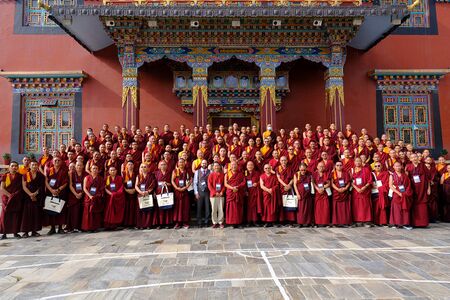
See all presentations
Karma Phuntsho
Khenpo Tenpa Tshering
Geshe Lobsang Gyatso
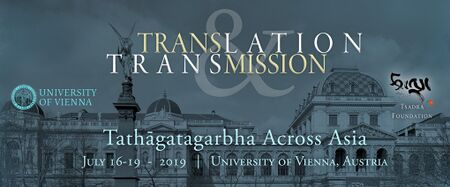
See all presentations
Klaus-Dieter Mathes
Ngawang Jorden
Jacqueline Stone

Panel Description: Continued scholarly publications, Buddhist teaching events, the recent development of online buddha-nature resources, and the associated Tathāgatagarbha symposium in Vienna in 2019 have spurred greater interest in the topic both within Tibetan Buddhist traditions and among other spiritual traditions. This panel brings together experts in an attempt to refine and deepen our understanding of buddha-nature both in terms of theoretical interpretations and practical applications in Tibetan Buddhist communities, past or present.
The main objective of the panel focuses on the interplay between points of doctrine and the practice of the path from the perspective of various Tibetan traditions and scholars. Contributions examine the interpretations of doctrines of tathāgatagarbha originally found in Indian scriptural sources. The methodological approach of these contributions range from historical-philological investigations to ethnographic research and comparative analysis.
See all presentations
Christopher Jones
Casey Forgues
Yaroslav Komarovski
The writer-in-digital-residence is the recipient of a grant designed to support Tsadra Foundation’s Buddhist literacy projects that connect the larger public with academic research and advance understanding of specific aspects of Tibetan Buddhist traditions. Writers help to curate this online resource and write essays on the history, philosophy, and practices associated with buddha-nature teachings and tathāgatagarbha theory in Tibet. These essays are addressed to an audience of educated readers of Buddhist materials and Buddhist practitioners.
Lopen (Dr) Karma Phuntsho is one of Bhutan’s leading intellectuals. He has finished monastic training in Bhutan and India before he pursued a M.St in Classical Indian Religions, and D.Phil in Oriental Studies at Balliol College, Oxford. He was a researcher at CNRS, Paris, a Research Associate at Department of Social Anthropology and the Spalding Fellow for Comparative Religion at Clare Hall, Cambridge University, and Research Consultant at University of Virginia. An author of over hundred books and articles including the authoritative History of Bhutan and Mipham’s Dialectics and the Debates on Emptiness, he speaks and writes extensively on Bhutan and Buddhism. Read a complete bio.

